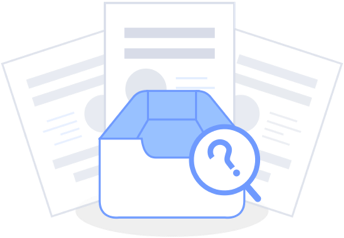 Ongoing
OngoingSmart Hand Controller3
STDSmart Hand Controller3
License
:CC BY-NC-SA 3.0
Description
This is an EXPERIMENTAL design, it is unproven and the software doesn't supported it yet!
For my OnStep telescope mount controller (visit my [group][1] for more information.)
**Note: For non-commercial use only (see License terms, CC-BY-NC-SA 3.0)**
This hand controller with OLED display plugs into OnStep's ST4 port or operates wirelessly and is able to fully operate an OnStep/OnStepX telescope controller.
It uses the Seeedstuido XAIO ESP32-C3 which also includes provision for running on battery power and is designed for this 1.54" screen.
Theory of operation
Button handling
Due to the limited number of GPIO pins on the XAIO ESP32-C3 this design uses two pins to sense button press events on six of the seven buttons. Each set of three buttons on a single GPIO pin are wired so the GPIO pin is at 3.3V when none are pressed, but becomes 2V, 1V, or 0V depending on which of the three buttons are pressed.
- GPIO2
- SHIFT press = 0V
- F1 press = 1.03V
- E press = 1.98V
- Nominal = 3.3V
- GPIO4
- N press = 0V
- S press = 1.03V
- F2 press = 1.98V
- Nominal = 3.3V
On the seventh [W] button a single pin in analog mode senses the battery voltage when the button isn't pressed. In this unpressed state a voltage divider circuit takes the 3.0V to 4.2V operating level of the battery and divides by 10 for 0.3 to 0.42V indicating the battery charge state.
- GPIO3
- W press = 3.3V
- Nominal ~= 0.3 to 0.42V
Standby power
The XAIO ESP32-C3 has a standby lower power requirement of 44 μA.
-
- The display I checked is rated at 0.08 watts worst case; 10mA at 3.3V is well within what an ESP32-C3 can supply from a pin and so the display can be completely powered off during standby.
- The battery monitor divider circuit has a resistance of 220k ohms which results in a power requirement of 17μA.
- So, total power use in standby should be 61μA and our spec'd battery is 2000mAH which would require 1366 days to discharge completely from full when in standby aka "off".
- I plan to use the SHIFT button to wake the controller (exit standby.)
Battery charging power
The XAIO ESP32-C3 was selected for this partially because of its 350mA charge current capability (which is ~3x higher than other similar models) which should charge our 2000mAH battery completely from empty in about 6 hours.
XAIO ESP32-C3 antenna
The XAIO module has an ipex connector and I anticipate using a small "film" or PCB type antenna set inside the edge of the case to the left of the display.
XAIO ESP32-C3 soldering and battery
This PCB is designed so the XAIO can be soldered to the PCB back using pin headers.
- If you want to use the specified LiPo battery you must carefully solder leads from the XAIO BAT + and - pads to the matching pads on the SHC3 PCB before soldering the XIAO in place using the pin headers.
- In theory you can instead SMT solder the XAIO in place without pin headers and even better without attaching any leads for the battery connection as there are SMT pads for this on the SHC3 PCB.
- I'm not an expert WRT hand soldering SMD but probably I would:
-
-
- Wet the BAT and thermal pads on the SHC3 PCB bottom with a little solder.
- Position the XAIO module on SHC3 PCB bottom and tack two corner edge pads on the same side with a little solder.
- Press firmly on the module while heating and adding solder to the PCB top BAT and thermal pads.
- Finish soldering pads normally.
-
Warning: Always confirm the polarity of all battery related connections!
Relative to v2.1.1 this design:
- Removes the display RST connection (most displays don't have/need.)
- Removes the auxiliary ST4 port option.
- Removes the BME280 option.
- Removes the power switch.
- Removes the MH-CD042 Li battery charger.
- Adds battery charge level sensing capability.
- Adds the ability to have wired SerialST4 and WiFi active at the same time.
- Has a better positioned USB-C port at the controller bottom next to the ST4 port.
- Has a lower component count and lower cost.
Revision history:
- v1.0.0 First release using Teensy3.2 with 1.3" OLED display and SMT buttons.
- v2.1.0 Re-design using SMT ESP32-S with 1.54" OLED display, through-hole buttons, and battery powered option.
- v2.1.1 Switched from Micro-USB to USB-C connector and added ESD protection diodes.
- v3.0.0 Simplified low cost non-SMT using XAIO ESP32-C3.
- v3.0.1 Changed to new button/GPIO scheme that allows pressing N or S and E or W at the same time.
- The prior setup was:
- GPIO2
- N press = 0V
- S press = 1.03V
- E press = 1.98V
- Nominal = 3.3V
- GPIO4
- SHIFT press = 0V
- F1 press = 1.03V
- F2 press = 1.98V
- Nominal = 3.3V
- GPIO3
- W press = 3.3V
- Nominal ~= 0.3 to 0.42V
- GPIO2
- The prior setup was:
- v3.0.2 Moved heat sink and battery pads under XAIO ESP32-C3.
- v3.0.3 Corrected I2C SDA/SCL pins and XAIO ESP32-C3 footprint.
Design Drawing
 The preview image was not generated, please save it again in the editor.
The preview image was not generated, please save it again in the editor.BOM
 Bom empty
Bom empty Clone
CloneProject Members
 Empty
Empty


Comment